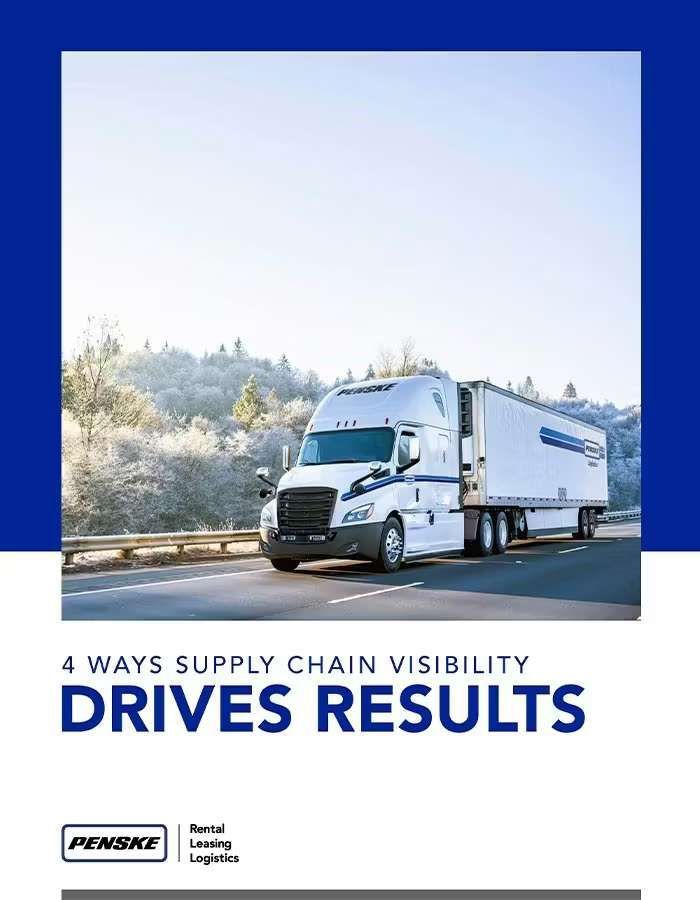Connect All Parts of the Supply Chain
Your operations and your customers depend on the supply chain. Whether it is a big-box store waiting for a delivery, a production line waiting for parts or a warehouse waiting for product, you need to know shipments will arrive on time. If any glitches occur along the way, you need to know about them so you can make adjustments and keep people informed down the line.
Information is the common denominator in today's supply chain. Smart technology drives the speed and accuracy of your data. Timely and exact information ensures efficiency within the supply chain and allows supply chain partners to mitigate problems before they occur.
But simply having data is not enough. To provide value, you need connectivity. It's the key ingredient that allows multiple parties within the supply chain to access precise information and use it to improve customer service and make tactical decisions. Through its ClearChain® Technology Suite, Penske Logistics connects all parts of the supply chain to provide you with visibility.
Capture, Store and Interpret Your Data
ClearChain puts customers' data into an organized, easily accessible repository. On a good day, ClearChain's visibility can help people within the supply chain drive efficiency and cut costs. On a bad day, that visibility can help people manage a disruption or turn trouble into an opportunity.
Use Data Insights To Drive Business Results
By facilitating the exchange of data in real-time, ClearChain directly links logistics operations with the shipper. ClearChain's apps ensure all parties within the supply chain exchange precise data that allows shippers, transportation providers and customers to make necessary decisions.
"Visibility drives customer service and makes data accessible so customers can make tactical decisions quickly."—Andy Moses, senior vice president of solutions and sales strategy, Penske Logistics
While key decisions can vary by industry, the information that drives all decisions stems from both a high-level, connected view of the supply chain and granular specifics. In manufacturing, information can allow users to sync deliveries with their production schedules. In retail, information lets users quickly obtain pallets of rock salt before a winter storm hits.
Get Real-Time Data at Your Fingertips
Because the supply chain includes many variables that must work together seamlessly, ClearChain provides status updates to keep customers informed. GPS tracking allows Penske to see carriers' locations at any point in time. If a carrier doesn't have an onboard tracking system, Penske can connect with the driver's cellphone, closing any potential black holes in the tracking process.
Increase Your Visibility
Many companies struggle with real-time supply chain visibility. Systems, data capture, processing, integration and analysis must align to provide a clear view, yet only 27% of shippers say they can organize and assess real-time data for standard reporting.

Find Potential Disruptions Sooner and Take Action
ClearChain allows Penske to get in front of potential disruption by monitoring real-time traffic and weather information along routes and near customers' locations. If a disruption occurs, Penske can work with carriers and shippers to find the right solution to meet customers' needs. Reacting quickly to a disruption can result in significant savings.
Success within the supply chain depends on connectivity. The ClearChain technology suite — coupled with the people and processes behind it — allows users to know what is happening at the touch of a button or click of a mouse or tap of a finger or swipe of a card. That knowledge creates better service and results.
Interested? Talk to an expert.
Tell us a little bit about your unique business needs, so we can begin a productive conversation.
Related E-Book
Explore this free e-book.
Related Articles
Resource Library
Explore articles, case studies, e-books and industry reports from our logistics experts.
Explore More



